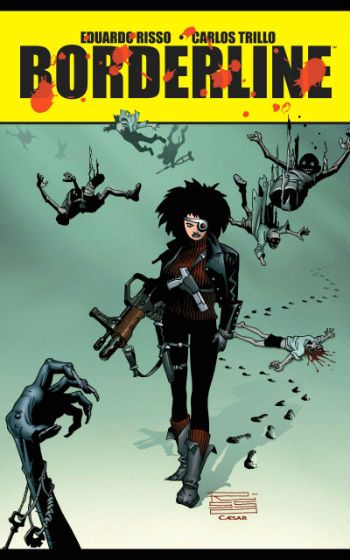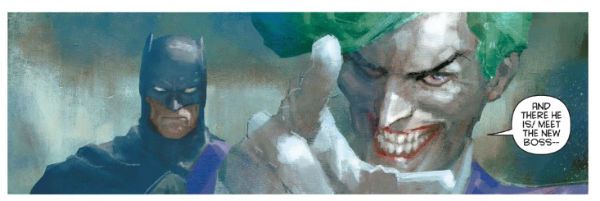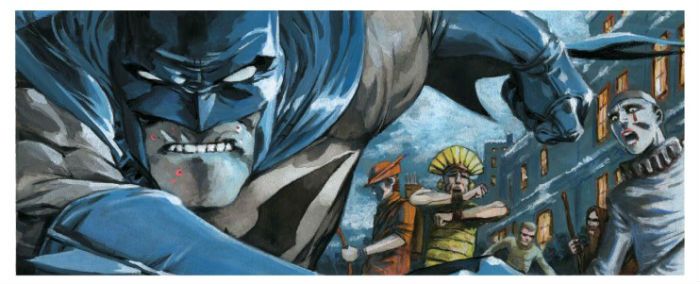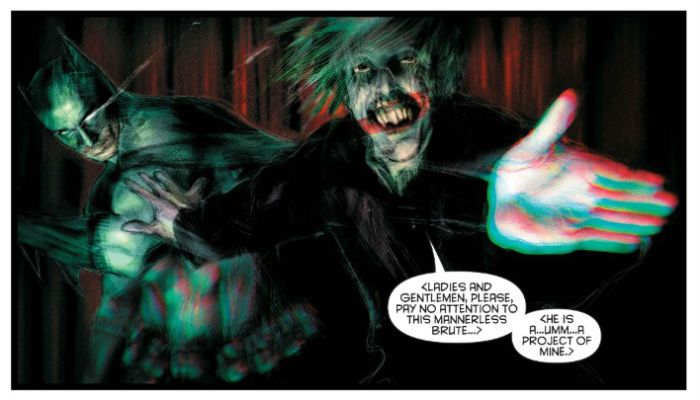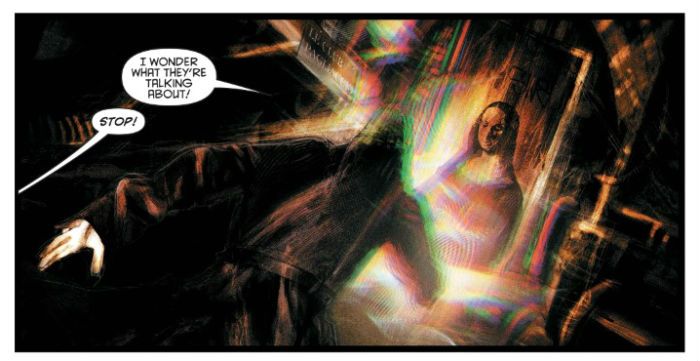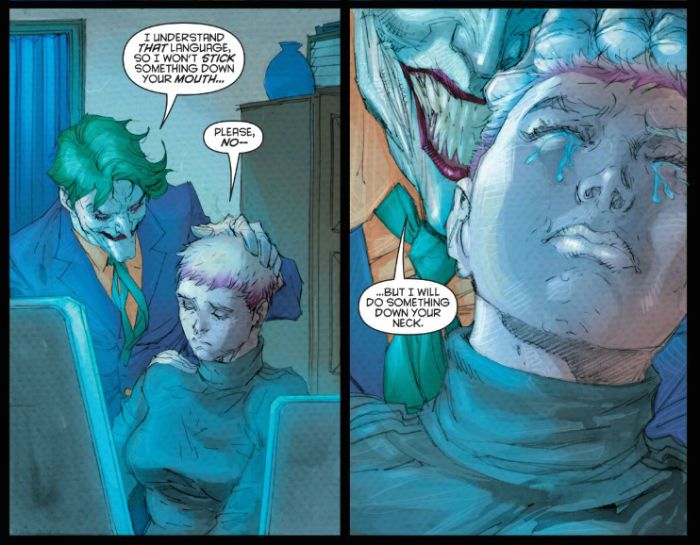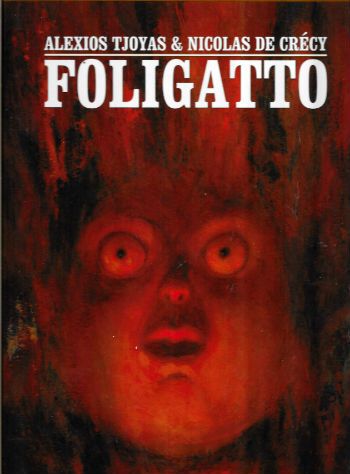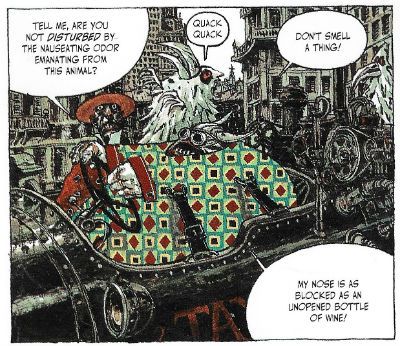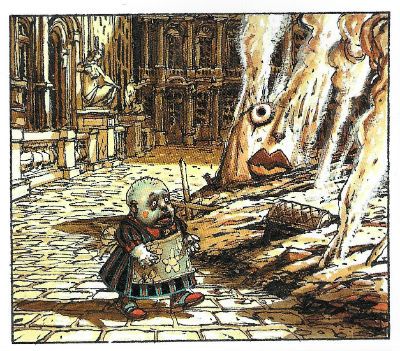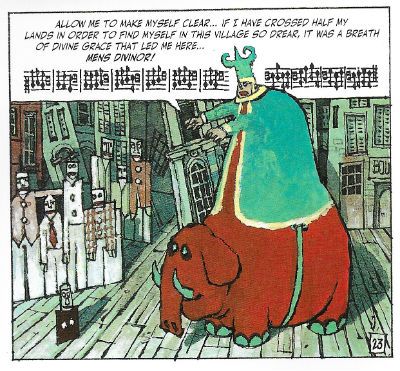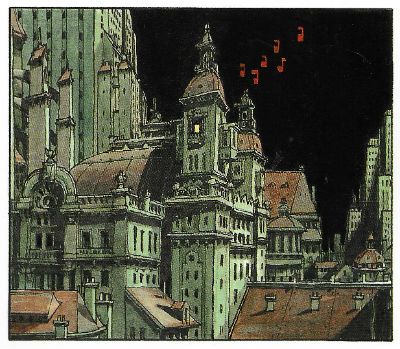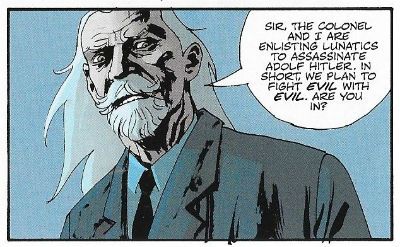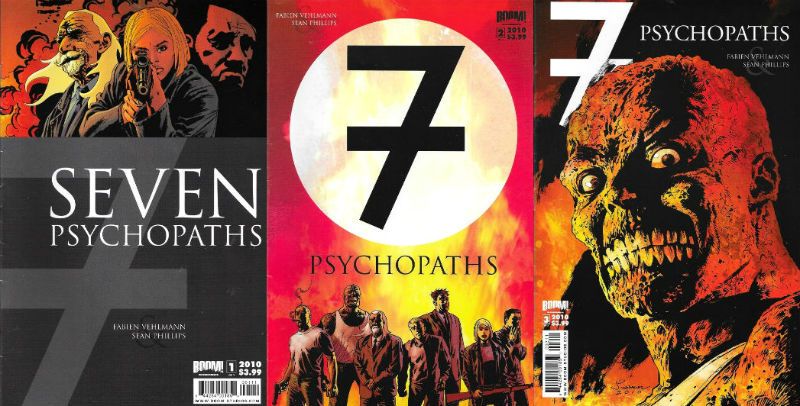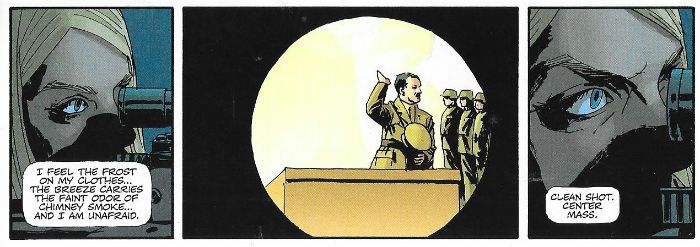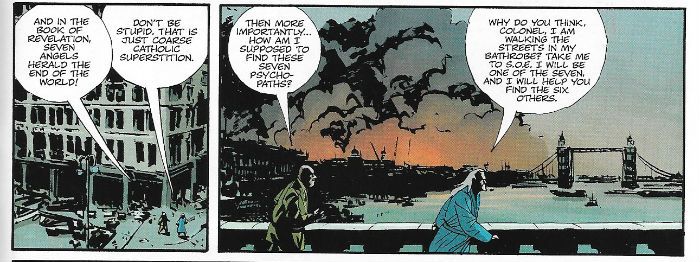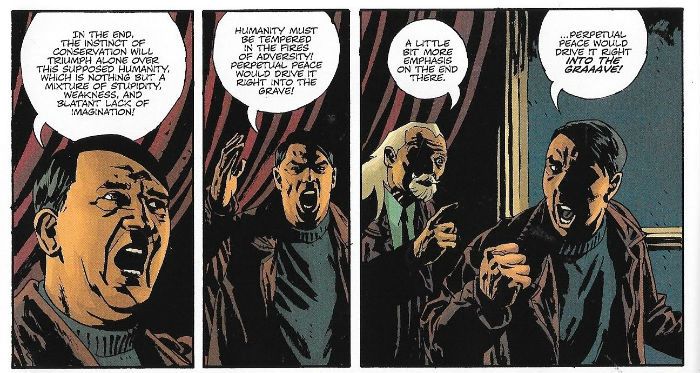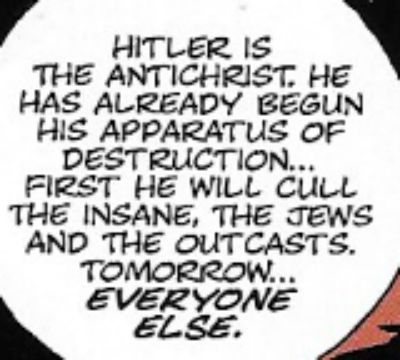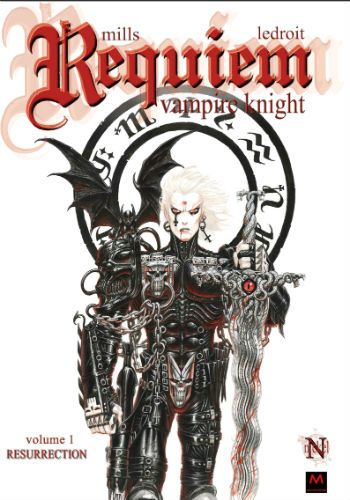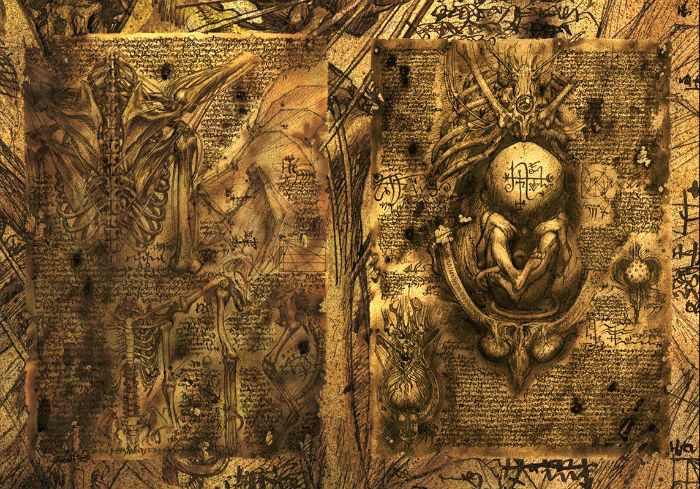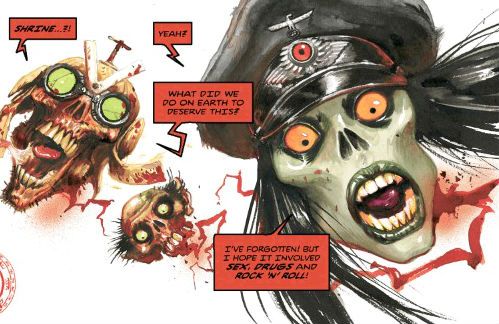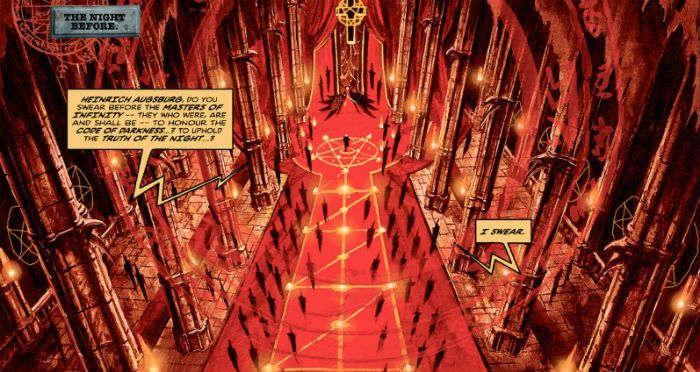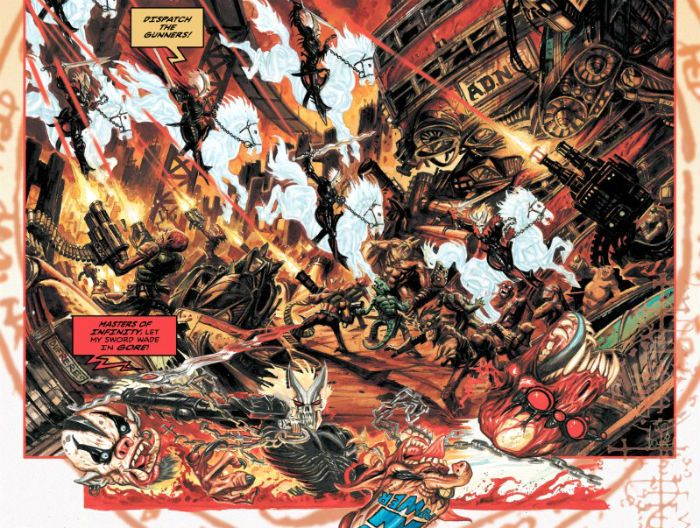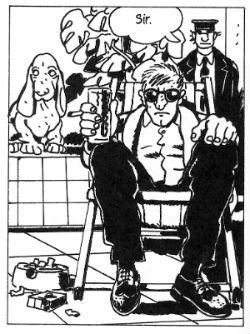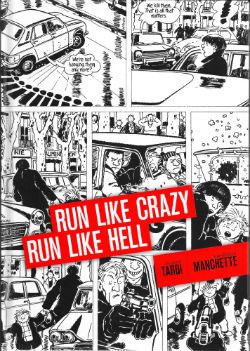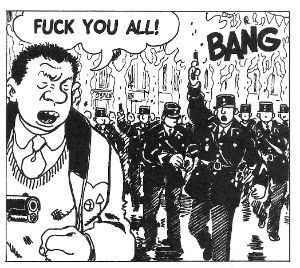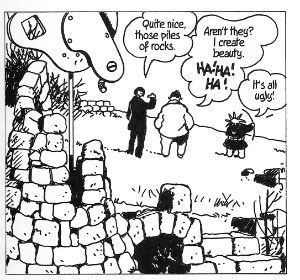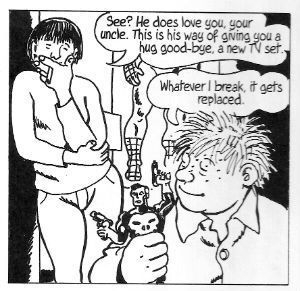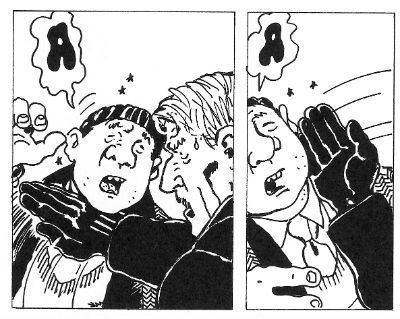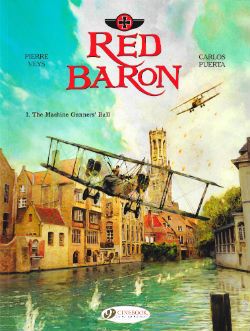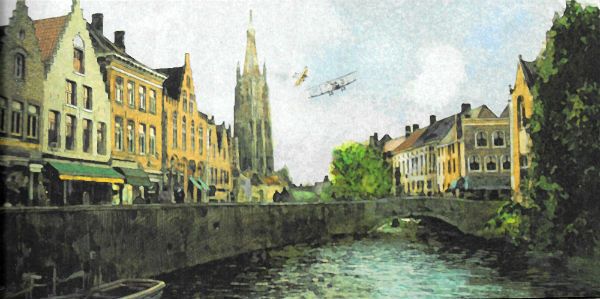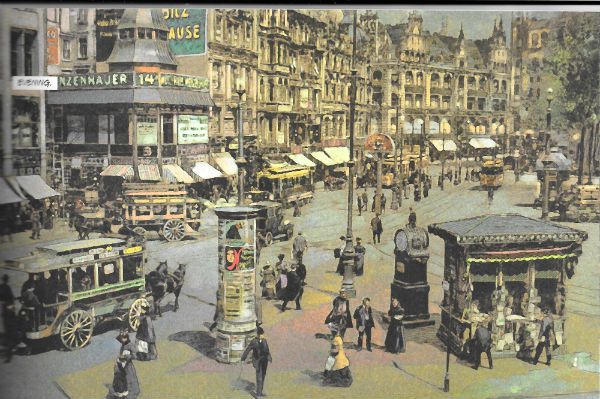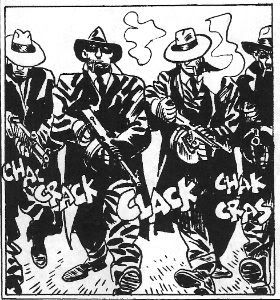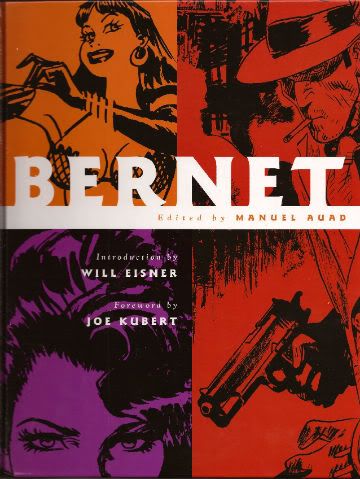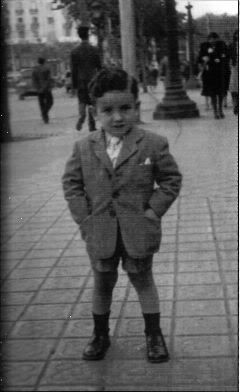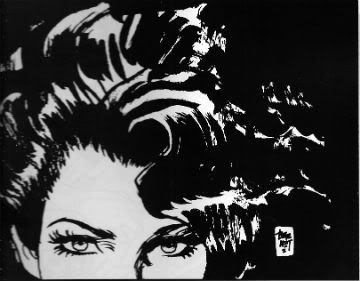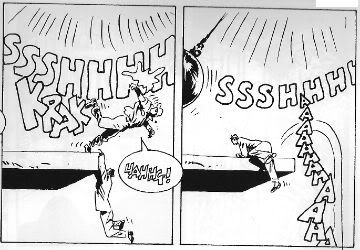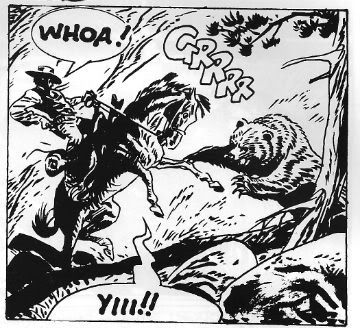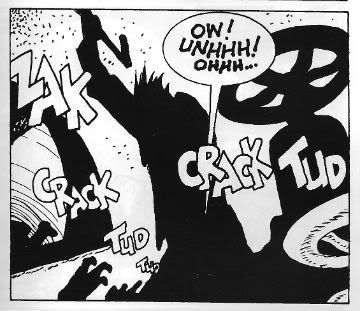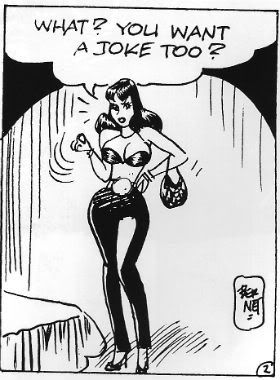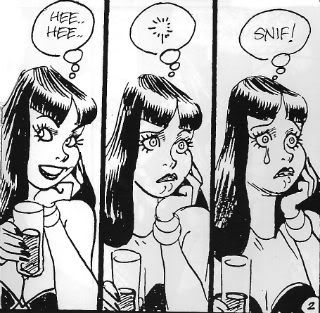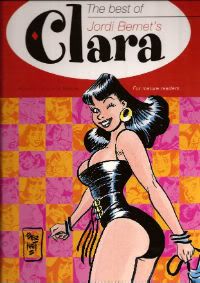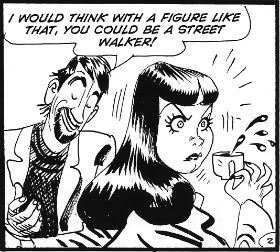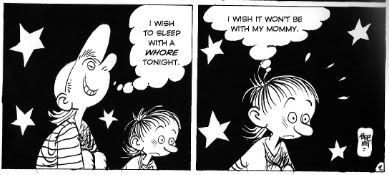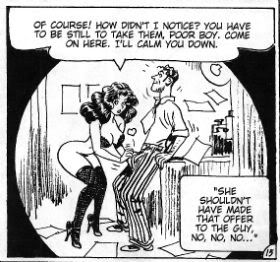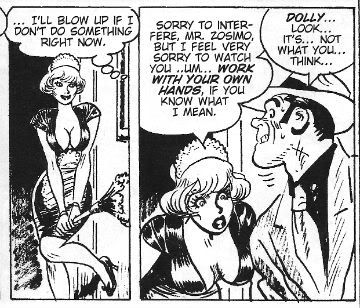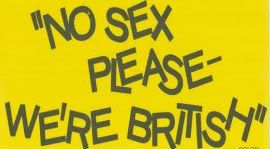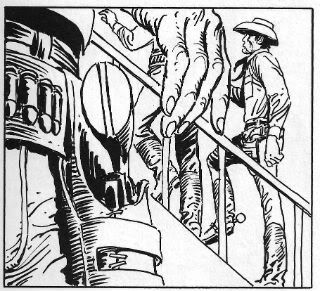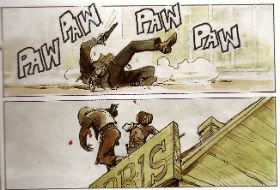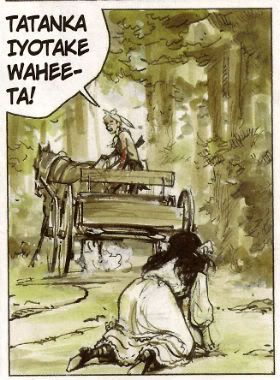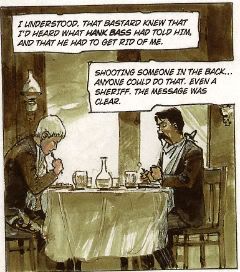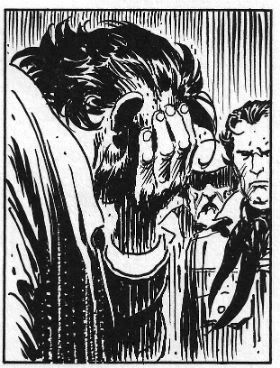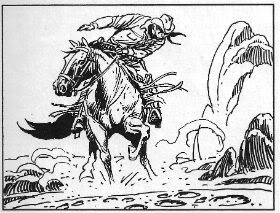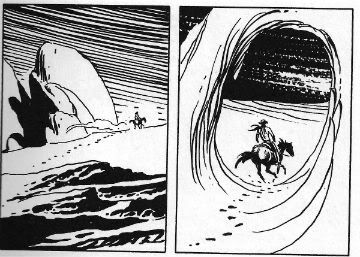“#i!” COMICS! Sometimes Tenderness Is A Weakness.
/There now follows a change to our scheduled programme. Settle back as our Argentinian chums Eduardo Risso and the late Carlos Trillo take us on a trip to the near future where everything is awful; simply awful. Just dreadful, darlings. Ugh. (Oh, And I realise Argentina isn't in Europe but the book was originally published in Italy(?), which is in Europe so check and mate!)
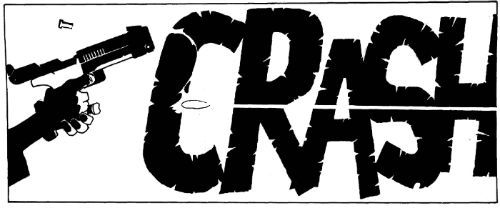 BORDERLINE by Risso & Trillo and Brandon
BORDERLINE by Risso & Trillo and Brandon
BORDERLINE Vol. 1 Art by Eduardo Risso Written by Carlos Trillo Translated by Ivan Brandon Dynamite, $19.99 (1995/2007)
BORDERLINE is set in a future dystopia and involves a sexy lady assassin and a troubled gruff male loner facing off in a world lit by the klieg lights of glaring subtext…oh no. OHO! Fret not, Euro-fan, it’s not as bad as it sounds. In fact it’s pretty neat. Usually that would be wholly down to the art, but the writing’s not half bad either; although it took me a bit to twig to that. But we’re getting ahead of ourselves. I mean, “sexy lady assassin”! Not my favourite genre; the bulk of it being composed of any number of trite shite titles in the North American Mainstream. The whole “Men damaged her but now she’s damaging back! But not at the expense of her femininity! You can still be strong in a thong!” gets creepy pretty quick, particularly when it’s written by some dude you just know is rubbing himself against the underside of the desk as he writes, because, damn, this is some progressive shit. Whoooo, man writes Strong! Female! Protagonist! damn, gonna be statues of him in the streets! With every scissor kick and poisoned kiss sexism dies another death! But people obviously buy lots of “sexy lady kill” books; because if they didn’t they wouldn’t make them. So as genres go someone likes it.
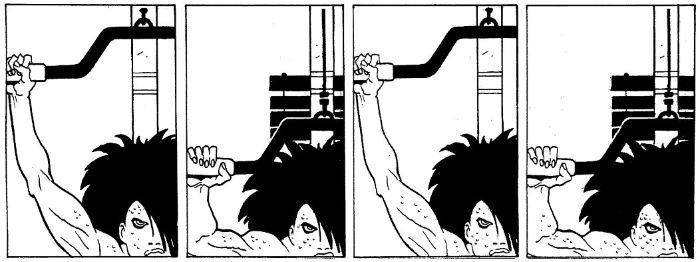 BORDERLINE by Risso & Trillo and Brandon
BORDERLINE by Risso & Trillo and Brandon
Which is fine. I mean, I’m not a big fan of the whole “nurse passive aggressively hounds doctor in a borderline psychotic manner until he marries her” genre, but I hear Mills & Boon are still going. Spoiler: I’m not a woman so you know maybe I don’t have the right to react to this stuff. Or maybe I’m not reacting in the right way? I don’t know. I mean, I get that these sexy killin’ ladies have to be toned and limber; you can’t be lugging a load of excess weight about if you’re a top assassin. I like the occasional pie, and the odds of me rolling across any car bonnets with twin pistols flaring without there being a lot of ungainly sprawling and sliding, and not a few hefty grunts, are kind of on the poor side. And I’m not being sizeist there; I’m just trying to save you some grief on Careers Day. These are tricky times; lots of toes to be trodden on. Should I just say it’s the creepy way the whole “sisters with pistols!” thing slyly panders to men under the femme friendly surface? Because it is. But that’s okay, because BORDERLINE knows that too.
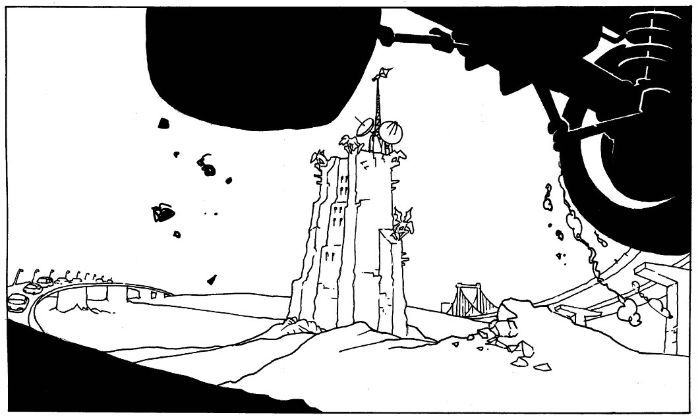 BORDERLINE by Risso & Trillo and Brandon
BORDERLINE by Risso & Trillo and Brandon
BORDERLINE shows that Risso and Trilllo know the genre and, better, they know how to toy with it. Games are very definitely being played here. First, and most obviously, you need a sexy lady assassin. Accordingly Risso’s heroine, Lisa, is a combination of sinew and pulchritude, topped by a black flare of Goth hair. The Sisters of Mercy, despite this sister having little of said quality, spring to mind and !bang! the viscous tang of “snakebite and black” springs to the throat as a Proustian moment flings you back to Bradford and a billion gigs of collapsed hair and sweat streaked eyeshadow. (Ask your parents.) Anyway, think an inhumanly aerobicized ‘80s era Beatrice Dalle draped in a leather rhino-shouldered jacket and sporting sprayed on jeans and you’d be in the right (erogenous) zone. Risso’s art has always been able to sell sex like the First Prize is a Cadillac El Dorado, Second Prize is a set of steak knives and Third Prize is you’re fired! But he never sells it cheap. Lisa is supposed to look ridiculously stimulating, so that she contrasts sharply with everything around her, because BORDERLINE is all about sharp contrasts. (It’s not an accident the book is in B&W.)
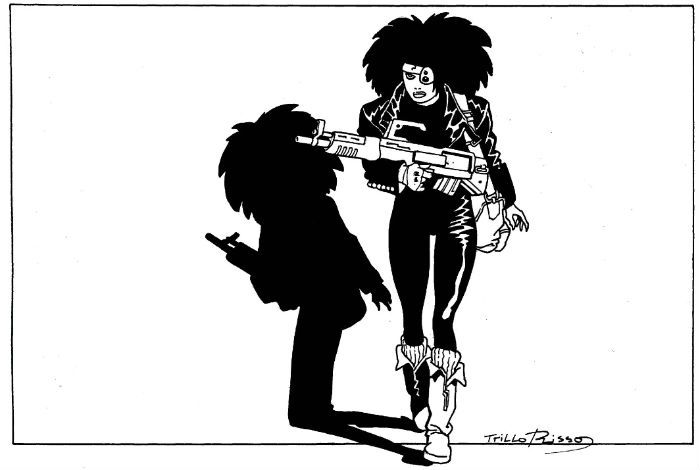 BORDERLINE by Risso & Trillo and Brandon
BORDERLINE by Risso & Trillo and Brandon
In keeping with the whole contrasts thing there is what Lisa looks like and what Lisa is. What she is is a piece of lethal meat exploited by everyone around her. Usually deadly ladies are all about their agency (for everyone born prior to 1990: this is their capacity to make choices, not who handles their bookings and headshots) and how they still have it goin’ on. Not Lisa. The only choice she has is not to pull the trigger, and that choice is fraught with the dangers of repercussion. Tradition dictates Lisa be damaged and tradition is fulfilled to a parodic degree here. Amongst other things (see below) Lisa is deaf. Since a deaf assassin would last about as long as a Raspberry Mivvi on a log fire I think we can safely identify some satirical intent here. She has so little agency that BORDERLINE makes the usual subtext text. Not only are her skills exploited, but so is her hawt body. During her down-time she is either being peeped on or pawed by Jack (or Mike) one of a pair of identical men (or women) whose race is as unfixed as their gender.
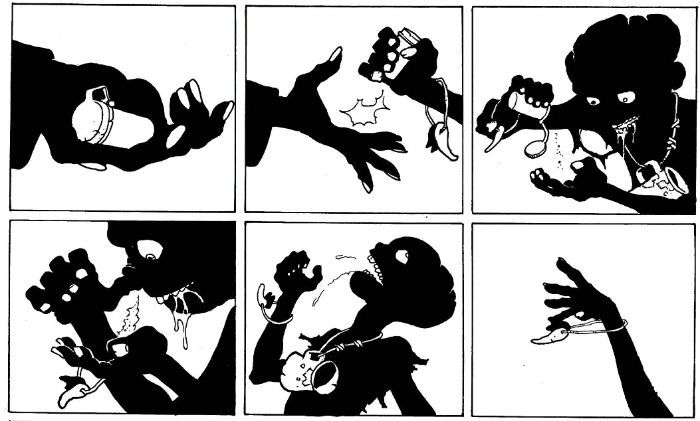 BORDERLINE by Risso & Trillo and Brandon
BORDERLINE by Risso & Trillo and Brandon
Usually this sexually predatory role would be filled by a fat sweaty, Caucasian male but BORDERLINE opens it up and recasts that character as both racially and sexually ambiguous; one who is also in a loving relationship, just to really mix it up . Now the defining aspect of the abuse has shifted; it is authority. Which is correct. Abuse is a consequence of the possession of power over another, not the possession of a penis. This is usually muddied by the fact most of the powerful people have penises (usually just one each) and false conclusions are then drawn. But it’s power that corrupts not the penis. (Except in ZARDOZ (1974) where “the penis is”, indeed, “evil.”) There’s a reason that no one says, “Penis corrupts and absolute penis corrupts absolutely.” Well, except for the occasional tipsy feminist in any Polytechnic Biko Bar circa 1990.
 BORDERLINE by Risso & Trillo and Brandon
BORDERLINE by Risso & Trillo and Brandon
Speaking of penises, Lisa’s opposite number, the stubbled, moody male loner, Blue(!), is slightly less interesting because stubbled, moody male loners are mostly uninteresting; with the exception of me, because I am intrinsically fascinating. Also, it’s an overdone trope. Luckily for your reading pleasure Trillo and Risso kick the legs out from under this tedious trope pretty swiftly. It’s okay him mooning about (i.e. being “blue”; geddit!) after Lisa and spray-painting her face on walls (not a euphemism) and being all sad inside because, sure, all that’s super dreamy and romantic, but he’s still six feet of shit stuffed in distressed denim. (SPOILER: Turns out he turned out his chick for a hit. Pretty hard to walk back from that one, no matter how sexy you find troubled loners. Before we rush to judgement, ladies and gents, let’s not forget troubled loners like raunchy Richard Speck and dreamy David Berkowitz. Whoo! Is it hot in here, or is it just me?)
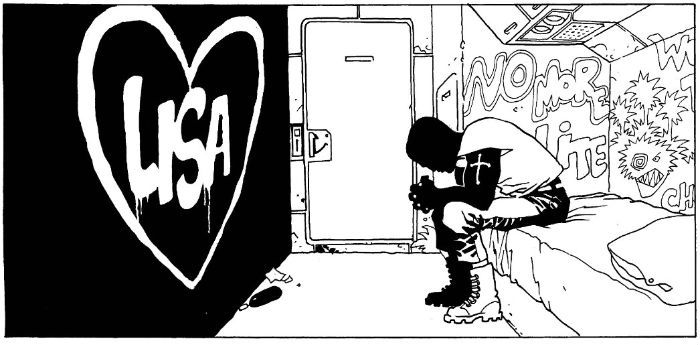 BORDERLINE by Risso & Trillo and Brandon
BORDERLINE by Risso & Trillo and Brandon
Look, the dude Blue didn’t just miss her birthday or have someone else’s knickers in his pocket, he traded her for a fix and, even better (i.e. even worse), Lisa was then harvested for organs before being rescued and having her organs replaced so she could be trained as an attractive assassin. So she’s traumatised beyond comprehension and deaf to boot. This pair of lovelorn killers dance the dance of death around each other, while their orbits threaten to collide with all the dramatic inevitability of any decent pulp fiction. Whereupon he looks at her with puppy eyes and then she forgives him and they get married and live in Mytholmroyd, where she looks after the house while he has a succession of joyless affairs at the Estate Agents where he works. No, not really because this isn’t real - it’s fiction! So you’ll just have to see what happens. On the understanding that a lot of it will happen in later volumes, since this is volume 1 of 6.
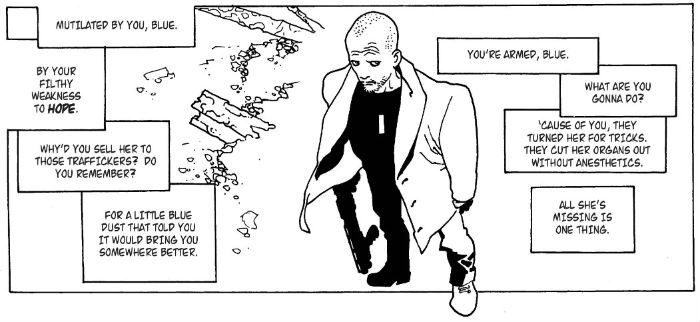 BORDERLINE by Risso & Trillo and Brandon
BORDERLINE by Risso & Trillo and Brandon
It being the first volume there’s a lot of world building but it’s a very simple world; there are two sides: one side controls its people by telling them there’s a reward after death, the other side is more materialistic. Both sides are ruled by bumbling chucklefucks boiling with psychological buboes, but society persists in functioning after a fashion, nevertheless. There are cities and subways and a civilisation of sorts. (Visually all this involves a lot of Besson’ing about; the tuxedoed thugs in the subway seem like a doff of the cap to SUBWAY (1985) and the refuse laden outlands strongly suggest LE DERNIER COMBAT (1983). Thankfully, there are no underage girls dancing to Madonna in their scanties.) People with money live in the cities and the people without money don’t. If you don’t live in the city you have to scavenge in the ruins of a world crumpled by an (as yet) undefined Event. The poor are twisted, crippled things with a tendency to throw themselves off high things such is the horror of life without Wi-Fi. Practically enough the poor are kept around so the monied can live off them; literally - by harvesting their organs, because fuck the poor, right? Damn straight. And everyone is controlled by drugs, particularly a drug called Hope which instils in the user a belief that everything will turn out okay. That’s right, there’s the key; it’s not really a world but a joke. The punchline being us.
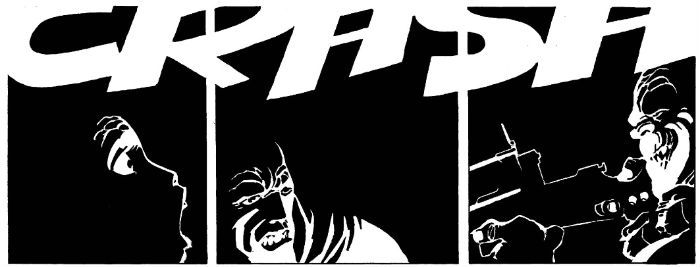 BORDERLINE by Risso & Trillo and Brandon
BORDERLINE by Risso & Trillo and Brandon
It’s a good joke; a smart joke and Trillo’s writing here is a lot cleverer than I first thought. Narration and dialogue is sparse and this being comics Risso takes the brunt of the weight. But then why waste Eduardo Risso? What’s important is the writing you do is good not that you do a lot of it. And here Trillo pulls off an exceptionally nice trick. His narration addresses the reader directly, giving proceedings a nicely informal, chatty, air, and occasionally it shrugs past things or draws your attention to things. It’s the kind of device North American comic creators get all giggly about doing ,and think Grant Morrison invented. This is because they have no sense of history and mistake it for modern. But then if your highest ambition in writing is to end up as a fucking TV show then you are unlikely to use a mode customary in the 19th Century novel (e.g. Victor Hugo’s Les Misérables (1862)) and if you did, you’d probably think it was first used on BJ AND THE BEAR (1979-81). Yeah, shit musical adaptations be damned, class lasts. Not content with being a classy bastard, Trillo occasionally, and whimsically, allows his “voice” to interact with the characters. It took me two reads to notice, because he doesn’t start waving his hands about and going “OOO! Look at me!” and thus critically kneecapping the suspension of disbelief along the way. No, he just smoothly slides it past you. And lest we forget, the fact that any of this good stuff strikes home is in part due to the translation skills of Ivan Brandon, who retains a tone at once formal and chatty in equal measure. Which can’t have been an easy gig. Via Brandon, Trillo’s done his job and done it well, the rest is up to you; if you notice, you notice…
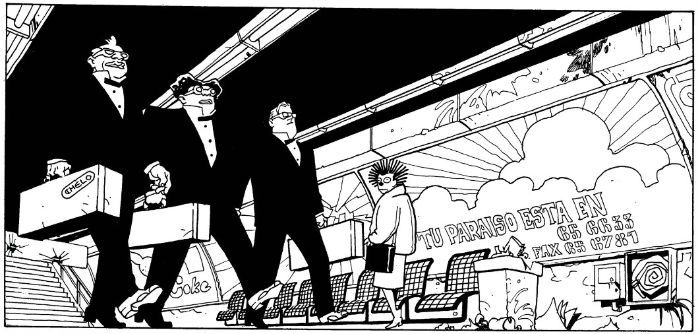 BORDERLINE by Risso & Trillo and Brandon
BORDERLINE by Risso & Trillo and Brandon
What you can’t help but notice is the phenomenal art of Eduardo Risso, unless some rich sod has made off with your eyes. Risso builds a world of desolation punctured by clusters of degradation. In keeping with the almost comical overtness of its themes the book is, I remind you, drawn in black and white; stunningly so, natch. Robbed of the crutch of colour Risso’s art soars rather than falls. Which comes as no shock to keen Risso readers, since both his (originally coloured) work on LOGAN for Marvel©™® and Batman for DC Comics©™® were made available in B&W editions. Colour might enhance Risso’s work but it isn’t essential. That’s a sure sign of art soaked with structural integrity. The key of course is Risso’s high contrast approach, which here leaves great swathes of pages untouched; colour can be accommodated but so can its absence. Outside everything seems lit by a merciless sun, while inside it’s the unflinching glare of neon, and everywhere shadows as black as a banker’s heart anchor it all. It’s not without precedent of course; the cowboy boots embellished with swastikas are as much a giveaway as the detail bleaching; someone’s been studying their Frank Miller circa Sin City. Actually, lots of people have been studying their Frank Miller circa Sin City, but no one has managed to subsume it into their style as flawlessly as Risso. As dumbly fun as the stories were, the real story in Sin City was Frank Miller’s courageous shearing of detail right up to the brink of sense. The lessons Miller’s pages contained were not lost on Eduardo Risso. He isn’t copying, he’s picking up the baton and haring off in his own direction; which is no way to win a race, but I’m not very good with sports metaphors; I’m sure you know what I meant. There is so much absent from the pages of BORDERLINE another, lesser artist would have some serious explaining to do. But Risso is a better, greater artist and so his art explains everything. Less may well be more but only because Risso works the balls off what little there is.
BORDERLINE is VERY GOOD!
NEXT TIME: Maybe get back on schedule with a bit of Dredd, or maybe something random again. I don’t know about you but I’m getting that Chaykin feeling. Anyway, something, sometime from the wacky world of – COMICS!!!


